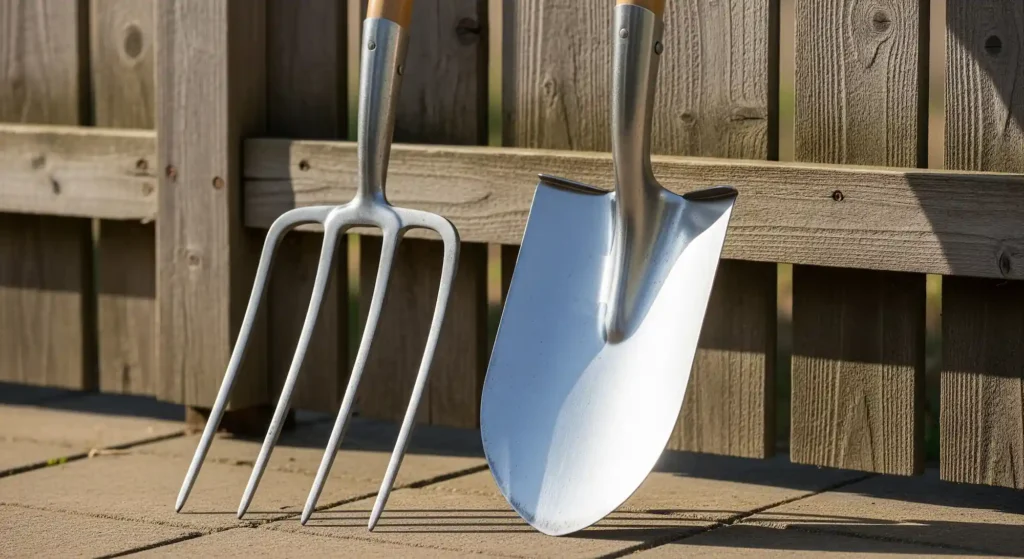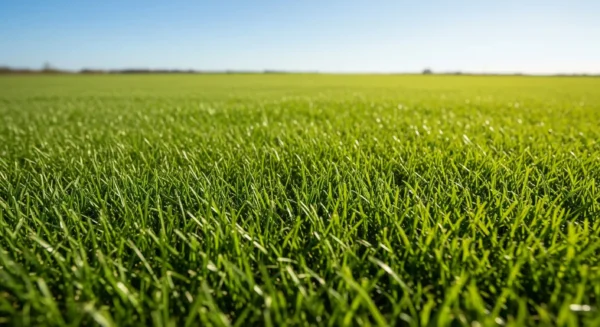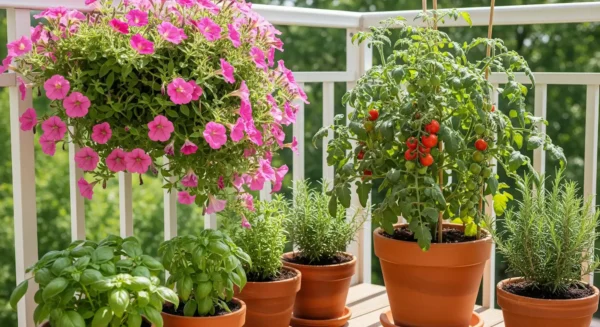From Weeds to Rich Soil, the Ultimate Guide to Preparing a Garden Bed
Every beautiful garden begins as a dream.
You see what I mean, not exactly? Tubs of luscious red tomatoes, armloads of vivid zinnias, and crisp, sweet lettuce just ready to be harvested. Then you turn to face outside. That dream can seem far off when one stands before a difficult patch of grass or a twisted forest of weeds. Every gardener encounters this blank canvas that seems more like a battlefield.
Imagine if you could create the most rich, life-giving soil you have ever worked with from that area of frustration. Together, that metamorphosis is exactly what we intend to do.
Hi there, I’m your friendly neighborhood garden enthusiast that has years of transforming run-down areas of ground into vibrant oasis. One secret is that the most significant investment you will ever make on your garden is the labor you perform prior to planting one seed. This book is a strategic strategy for laying a foundation of success, saving you pain, and ensuring stronger, more plentiful plants; it is not only about digging!
So take a glass of lemonade, put on some gloves, and let us begin. One thoughtful move at a time, we will create your dream garden.
Instruments of the Trade: Your Bed-Prep Toolkit
Talk gear before we start building. Not only does having the correct tool for the task simplify the work; it also increases its efficiency and greatly reduces its risk. You do not need a sophisticated, costly shed loaded with tools. Here is what will really change things.

The Absolute Essentials, sometimes known as The “Must-Haves”:
- Digging Fork (also known as Broadfork): Your first friend in helping to loosen soil is this one. Its long, powerful tines are meant to break up compaction deep down without totally upsetting the delicate ecosystem of your soil. That is a powerhouse.
- Spade: Perfect for cutting across difficult sod and producing neat, clean edges is a spade. Seek one with a flat, sharp blade. It allows you amazing control in establishing the boundaries of your new bed.
- Wheelbarrow: Best friend of your back. You will move compost, drag away weeds, and move soil using it. Never consider starting without one at all!
- Sturdy Gloves: Really, don’t overlook them. Good gloves will enable you work longer and more comfortably by saving you blisters, thorns, and scrapes.
The Highly Recommended (The “nice-to–haves”)
- Hard Rake: Essential for the last stages of leveling the ground and eliminating clumps of stones or gravel is hard rake.
- Tarp: Among my best pro-tips is this one. Cover your work area with a tarp to heap dirt or weeds on. It maintains your grass neat and simplifies cleanup.
A Quick Word on Shovels vs. Spades: Though they’re different, many people use the words synonymously. Usually designed for digging, cutting across sod, and edging, a spade has a flat blade. Usually used for moving loose material like mulch or compost, a shovel boasts a scooped blade. Your first choice for this work is a spade.
First: Evaluate your canvas and schedule your attack.
Although you’re ready to start excavating, trust me on this: only 15 minutes of observation of your selected site will save a whole season of annoyance. No matter how well you prepare the ground, a plant placed in the wrong spot will always struggle.
- Perform a Sunlight Audit: Visit your selected site throughout a day. It gets how many hours of direct, unvarnished sun? Most vegetables—including tomatoes, peppers, and squash—as well as sun-loving flowers—such as zinnias and cosmos—need at least six to eight hours of direct sunlight to really flourish. Should your spot be shorter, do not despair! For items like lettuce, kale, hostas, and hydrangeas, that’s ideal.
- Though it seems complicated, a drainage test is easy. Dig a little hole roughly one foot broad and one foot deep. Water it and let it totally empty. Fill it once more then time the disappearance of the water. If water is still standing there four to five hours, you most certainly have compacted, heavy clay or soil that doesn’t drain well. That’s alright! That is absolutely fixable.
- Name Your Soil and Enemy: At last learn what you are up against. Is that simply a grassy patch? Alternatively are you up against a more difficult opponent such as invasive Bermuda grass, deep-rooted bindweed, or tenacious thists? Knowing your opponent is important since some cleaning techniques perform better than others on difficult persistent weeds.

Second: Clear the decks; your three paths to a fresh slate are:
Alright, it’s time for the most fulfilling bit—say goodbye to grass and weeds! There are various approaches to accomplish this; none of them are “wrong.” It’s all about deciding which approach best fits your gardening philosophy, energy level, and timeframe.
First method: solarization—the friend of the patient gardener
This is sheer genius—it essentially bakes weeds, their seeds, and soil-borne bugs out of existence using the sun’s energy. Particularly for those difficult perennial weeds, it’s quite successful.
To do this, chop or mow the surrounding vegetation as low as possible. Deeply water the area; the wetness aids in heat conductance. Lay a 4–6 mil thick sheet of translucent plastic over the whole bed. To capture all the heat, carefully secure the edges with rocks, bricks, or dirt.
The hitch is you have to be patient. To be totally successful, this approach takes six to eight weeks during the hottest, sunniest time of the year. The end effect is a zero physical effort, sterilized, weed-free bed nevertheless.
Method 2: Lasagna Gardening or Sheet Mulching—The Dream of the Soil Builder
This is personally my preferred choice! You lay layers of rich fresh dirt exactly on top while smothering the current vegetation. This is a no-dig, powerhouse for soil-feeding.
How should I accomplish this? Straight on top of the grass and weeds, lay a layer of plain cardboard. At least 6 inches overlap all the borders so light cannot pass through. Till it’s drenched, completely water the cardboard. Start layering now. Layer “greens” (such as kitchen scraps or grass clippings) three to four inches then “browns” (like as fall leaves, straw, or newspaper) four to six inches. If at all possible, keep repeating; end with a thick, 4-inch layer of completed compost.
This entire pile will so break down into the most exquisite, rich, worm-filled soil possible over a few months. And you may even start straight away planting into the top compost layer!
Method 3: Manual Elimination—the Instant Gratification
This is conventional elbow grease from long ago. Though it’s the most labor-intensive, it’s the fastest approach to have a bed ready for planting.
To make working easier, irrigate the ground a day or two ahead if it is dry. Like cutting a pan of brownies, use your sharp spade to cut the sod into reasonable squares. Then, under a square, pry your digging fork upward with your body weight.
Once you raise a sod piece, shake as much top soil as you can back into the bed! Crucial Pro-Tip: That’s your black gold; don’t toss that great item.
Typical Mistakes to Avoid
- Pulling weeds by hand: Avoid using a rototiller on a weedy patch whatever you do! Tilling simply slices the roots of weeds such as bindweed or couch grass into hundreds of pieces, each of which will gladly grow into a fresh plant. You will solve your problem by multiplying!
- Sheeting mulching: calls for careful removal of all plastic tape and shipping labels from your cardboard. They will simply contaminate your beautiful new garden soil and not break down.
- Getting Rid of Good topsoil: is something we should keep stressing. Your most useful tool is the earth clinging to the sod you are removing. Shake it, knock it back, and put it where it belongs.
The Clearing Method
| Method | Time Required | Physical Labor | Cost | Effectiveness Against Tough Weeds |
|---|---|---|---|---|
| Solarization | 6-8 Weeks | Very Low | Low | Very High |
| Sheet Mulching | 1-6 Months | Low | Low-Medium | High |
| Manual Elimination | 1 Day | High | Low | Medium |
The Magic of Amendments: Step 3: Feed Your Foundation
It’s time for the most crucial stage of all now that you have a clean record. This is the element that will really define how well your garden succeeds. Plants acquire their food from the life within the earth; they do not from the dirt itself. We now have to feed that life.
Compost is the first most important ingredient.
Do this if nothing else you do. The one best addition you can make to any kind of soil is compost. Dark, crumbly, smells like a lush forest floor, and filled with microbial life. It nourishes the good fungus and bacteria that keep a garden alive, enhances drainage in heavy clay, helps sandy soil hold water, and offers your plants a precisely balanced meal.
How much ought you to add? Share freely. Try to lay a 2-4 inch layer consistently over your new bed’s whole surface. To be honest, you really cannot add too much of this material.
Additional Important Participants
Although compost is king, a few other additions might be beneficial—especially if you know the sort of soil you have:
- Excellent for helping soil retain moisture, peat moss or Coco Coir is a lifesaver in sandy soils or hot regions.
- Consider worms castings as a sort of nourishment for your soil. It is quite mild on plants and highly nutritious.
Just lay your selected amendments across the top of your cleared bed. We will then choose how best to incorporate them.
The “Dig” vs. “No-Dig” Paths Step 4: Choose Your Philosophy
With the feast of your earth spread out before you, you must make one last major decision. Deep digging was the norm for years. More lately, emphasizing on preserving the delicate structure of the soil, a “no-dig” movement has become somewhat well-known. There is only what’s right for you and your garden; there is no one right answer.
Path A: The Soil- Builder’s Way No-Dig Method
This is a lovely, sophisticated way for nature to be worked with.
How it works: Your work is virtually finished with this approach! Your new top soil is the two to four inch layer of compost and additions you applied. You just start right next to it. Without your ever having to raise a spade, worms, bacteria, and weather will gently mix all that goodness into the soil below over time. It preserves the soil food chain and over time reduces weeds.
Path B: The Soil-Conditioner’s Way—the Light-Dig Method
If you just want to hasten the process or are beginning with really compacted, heavy clay soil, this is a fantastic choice.
The intention here is to loosen the soil and gently mix in that top layer of additions, not to turn everything upside down. Holding your digging fork straight down into the ground, push it. Pull back gently to free a chunk; then, go on. Start your work backwards across the bed. The concept is to build air channels and gently fold the compost such that plant roots have a simpler path to follow.
Step 5: The Last Rake and Finish Thought
You’re nearing home stretch. Whatever road you go upon, the last step ties everything together.
Using your firm rake, lightly smooth the bed’s surface. You want to split any big clumps and produce a fine, level surface fit for seeds or seedlings. Give the bed a light watering once you’re done to help it settle.
Now take a backoff. Really. Spend some time appreciating what you have made. From a patch of weeds or grass to a perfectly ready bed bursting with possibilities just begging to be lived upon, you have gone from a mess. You created a foundation, not merely dug some dirt. Recall that this foundation is your guarantee to your seedlings of the absolute best start available. You are here for this moment.
Commonly Asked Questions
How should one get ready a garden bed?
The “best” way always relies on your particular circumstances! Still, the most successful procedure uses the stages we described: 1. Analyze your site for drainage and sunlight. 2. Using either solarization or sheet mulching, clear any grass and weeds. 3. liberally change the soil with 2–4 inch compost layer. 4. Choose a dig or no-dig route to include it. Following this order guarantees that you are laying a strong basis.
How best should one prepare garden soil?
The optimal preparation emphasizes on developing soil life and structure. Adding a thick layer of premium compost comes first most importantly. This feeds the soil, enhances clay’s drainage, holds water in sand, and releases nutrients gradually. Excellent preparation is more about introducing enormous volumes of organic matter than it is about deep tilling.
Under a new raised bed, how can I get the earth ready?
It’s straightforward. Just cut any tall grass or weeds where the bed would sit. You need not excavate or till the ground under. Lay a layer of simple cardboard on the ground inside your frame after it is in place. This will suffocate the grass and weeds below, so stopping their growth into your lovely bed.
On the bottom of a raised garden bed, what do you lay?
Simple cardboard is the best item to lay on the bottom. Though it smothers grass and weeds, it functions as a naturally occurring, porous weed barrier allowing water to drain and earthworms to pass through. It will break down over a season and find place in your soil ecology.
Why in raised beds does cardboard make sense?
Two main uses for cardboard are… It’s a weed block first, stopping grass and weeds on the ground from spreading up into your bed. Second, it strengthens soil. It increases carbon in the soil and stimulates earthworm activity as it breaks down, therefore aerating and enriching your plant bed from the bottom up.
From what base should a raised garden bed be built?
The ideal basis is just level ground. Underneath the frame, you are not required to put sand or gravel. Just make sure the ground is sufficiently level so the frame lays flat; then, before you begin filling it, line the bottom with a layer of cardboard.
Should you not load a raised garden bed with anything?
Steer clear of products that can damage your plants or won’t break down. This covers rocks (unless a very deep bed need for a bottom drainage layer), plastic sheeting (which suffocates the soil), treated or painted wood chips, and fresh manure capable of burning plant roots. Furthermore avoid stuffing the entire bed with simply cheap “topsoil” or native clay soil since it will compress and lack nutrients.
How might I prevent the rotting of my raised garden bed made of wood?
Starting with the correct supplies will help you the most. Use naturally rot-resistant woods including black locust, redwood, or cedar. Untreated wood, pine or fir, will rot far faster. Additionally available are composite or galvanized steel beds that won’t decay at all. Additionally helping to extend the life of the wood is ensuring proper drainage around the bed’s outside.









